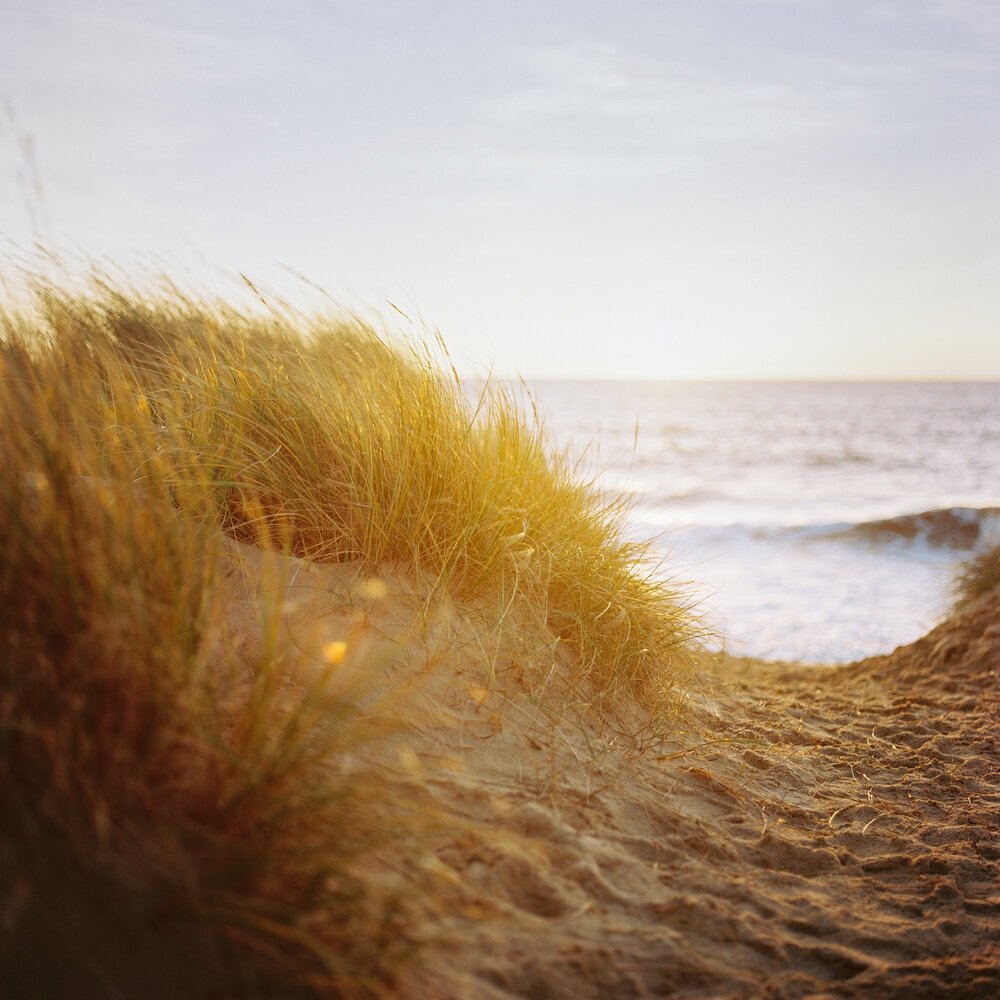Shooting Film in 2021
When I’m walking about with a film camera, I frequently encounter inquisitive looks from others. It usually becomes a conversation starter that eventually leads to the question, "What's the reason behind shooting on film?"
Before I dive into answering that question, I must stress that the intention of this blog isn’t to favour film over digital or to create a debate between the two. I like to work with both mediums and both have their positives and negatives (see what I did there?). This blog intends to answer the question as to why, along with some thoughts towards how shooting film could lead to you becoming a better photographer.
A big reason as to why I shoot film is the slowed-down process of it all. Digital is great in many ways, but there is an immediacy to it which, in my opinion, can remove an element of thought from capturing an image. When you shoot with film, there is usually a much slower process. With the medium format film cameras that I use, the focusing and metering are manual, and because I’m working slower, I’m looking a lot more at what I’m shooting. There is an element of intentional thinking before I press that shutter. These thoughts are often along the line of: is this something that I want to capture? Is this exactly how I want to frame it? Is this the composition that I want to go with? and with this train of thought, it’s like I’m gaining a deeper understanding of what I want to achieve in the final image.
With digital photography, I often find myself losing some of that train of thought and acquiring bad habits such as overshooting and “chimping”, rather than pausing and changing up each time until I find a composition that I’m happy with.
What I shoot on film is also limited to how many shots that I have to hand. I can either shoot 8 shots a roll with my Fujica GW690 or 12 shots on a roll with my Hasselblad 500 C/M, so each of those shots needs to feel right.
With this element of limitation and often trial and error, you can start to discover what you like to shoot and manifest an authentic voice through your work. Naturally, you can do the same with digital, but I would truthfully say that film photography has helped in my journey.
Once you have your rolls of film ready to post, you have time to think as you wait for the results to come back from the lab. There is an element of breathing space to the whole process. I may wait a couple of weeks before sending the film off to a lab where it’s developed and scanned back to me, and in that time of waiting, I’ve been thinking about what I’ve shot. Seeing it weeks later brings a fresh perspective to the images.
Aesthetically, I find that film looks great across the board too. There is this feeling of texture to it through the grain. Software such as Lightroom and Capture One can emulate this, but in my honest opinion, this isn’t to the same degree. On top of the grain, you also have lens softness, vignetting and various other imperfections. There is just something that’s very visually appealing to film. Furthermore, it has an expression and feeling to it. Something that I feel is lacking from digital RAW files.
Also, let's talk about colors. Personally, I steer towards shooting with Kodak Portra 160/400 films, and on occasion, I'll use Fuji Pro400H. These film stocks produce stunning pastel-like colors when overexposed. I'm drawn to this gentle, delicate look that the stocks provide, and while I do have presets that can emulate it, I find it challenging to reproduce that overall feeling. I often ask myself, why settle for an imitation when you can have the real thing?
I also have a lot less screen time in terms of post-processing. Usually, I may straighten the odd image or tweak contrast and sharpness if necessary, but other than that, the results are just stunning.
Ultimately, the choice of what to shoot is a matter of personal preference. While I have a great fondness for working with film, I don't think I could limit myself to it entirely. Film offers a different shooting experience that helps me connect more deeply with the photographic process. However, using film can be costly, especially with the significant price increases in recent years for both film and some camera models.
Despite the challenges that come with shooting film, I believe that it's these challenges that help me improve as a photographer. If I'm not being challenged, then I'm not growing.
All images shot with a Hasselblad 500cm & Carl Zeiss Planar 80mm f/2.8 lens and a Pentax 67 & Pentax SMC Takumar 90mm f/2.8 lens.
Develop and Scan by FilmDev (Noritsu)




